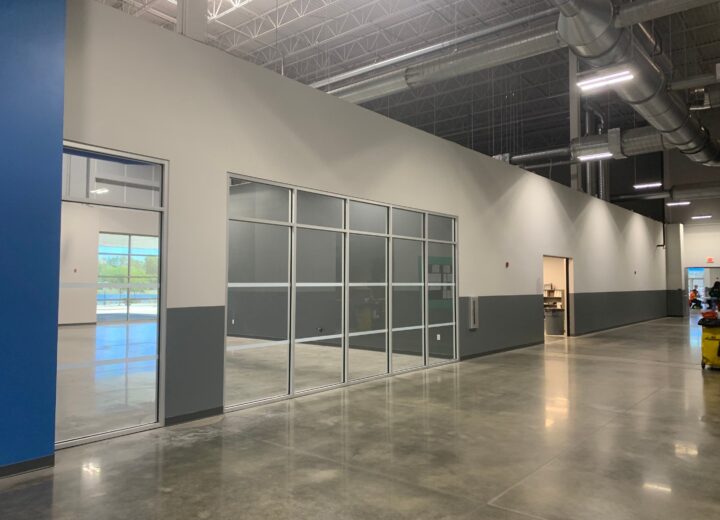
Whether your industrial ceiling is peeling, or it’s just dirty or stained, the easiest way to restore it to its original condition is to repaint it. However, painting industrial ceilings presents a number of unique challenges that business professionals should be aware of.
In a nutshell, proper surface preparation and coating selection according to the activities being performed aren’t the only aspects that need to be considered before painting industrial ceilings. Industrial painting crews must also inspect work areas and carefully plan for project-specific hazards. To shed some light on this topic, here are some important aspects that business professionals should take into account before painting the “fifth wall” in an industrial facility.
Project Management
When it comes to industrial facilities, painting projects can vary tremendously. Besides the size of the facility and specific requirements, a facility that’s vacant means that industrial contractors can carry out painting operations without worrying about the potential disruptions to daily operations. Conversely, a building that’s occupied means that the painters need to section off the areas to be worked on and work around the facility’s schedule in order to minimize disruption.
Depending on the use and occupancy of a facility, a painting project can take longer to complete. However, an experienced industrial painting contractor like Performance Painting Contractors is typically accustomed to working around plant shutdowns, when a large amount of work—such as painting the ceiling and walls—can be completed in a relatively short time frame.
Surface Preparation
As professional industrial painting contractors, we take surface preparation very seriously. In an industrial facility, substances like fumes, dust, vapor, and gases tend to accumulate on different surfaces, including walls and ceilings. To ensure that each paint job that we complete performs to its maximum potential, we properly test, clean, and prepare all the surfaces in need of painting.
In most industrial facilities, proper surface prep often involves wiping surfaces with solvent and using water blasting or abrasive blasting techniques in order to promote the adhesion of the new coatings.
Coating Application
Coatings for industrial ceilings range from conventional alkyd and water-based paints to epoxies, urethanes, and enamels, which are typically used to address the particularities of industrial painting projects. Also, opting for special corrosion-resistant coatings and repainting metal roofs on a regular basis can help combat corrosion and prevent structural damage.
Irrespective of the type of coating specified, one coat of primer and one or two coats of paint should be applied after thoroughly cleaning the ceiling. Each coat of paint should be allowed to dry completely before applying a new coat. Today, almost all industrial ceilings are painted using spray-paint application methods. In addition to offering a faster means of applying paint compared to roller and brush application, spray painting allows painters to deliver a more uniform coat of paint.
Although coating durability and performance in service are our first two priorities when specifying coatings, odor can be a concern in occupied facilities. It is for this reason our painters use low- and no-VOC paint systems whenever possible, apply solvent-based coatings only after hours, and use adequate ventilation systems, when necessary.
Working at Heights
Painting industrial ceilings is challenging mostly because it involves working at varying heights. Because the safety of our customers and employees is of the utmost importance at Performance Painting Contractors, we have implemented all the measures necessary to control hazards and prevent workplace accidents and injuries.
Reasons to Paint Your Industrial Ceiling
In today’s competitive business environment, having a clean and bright industrial facility is key to retaining employees and attracting customers. Besides boosting the curb appeal of your facility and making it look more professional, painting your ceiling a light, reflective color can create the illusion of more space and increase the luminosity. As a result, you’ll be able to cut down on light fixtures, installation expenses, and energy consumption.
Additionally, a reflective ceiling can eliminate shadows in work areas and raise worker awareness, which will increase productivity and reduce the number of workplace accidents. Not to mention that increased light from your ceiling will encourage cleanliness, as dirt will be more noticeable on the floor and other surfaces.
Considering all these benefits, repainting your ceiling on a regular basis is necessary in order to keep your business in tip-top shape. If you intend to paint your ceiling, walls, or any other surfaces, Performance Painting Contractors has the right solution for your facility. Please contact us today to discuss your painting project in detail!






